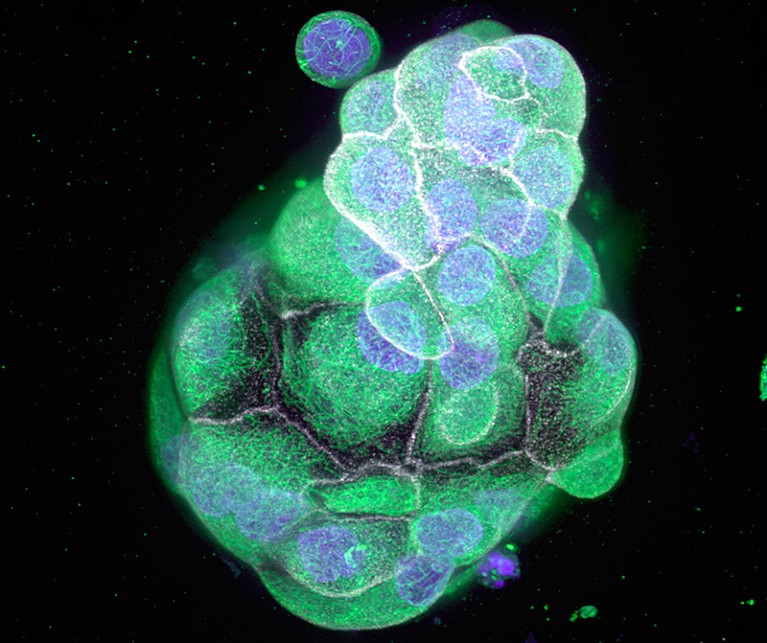
Micrograph of a colon cancer organoid culture.Credit: Dr Torsten Wittmann/SPL
Gene therapy — which aims to treat genetic conditions by altering the genes that underlie the problem — has had something of a turbulent history. When it was first mooted half a century ago, researchers were enthusiastic about the prospect of treating the underlying causes, rather than just the symptoms, of persistent and complex genetic disorders. Then came the recognition that changing the DNA of a sufficient number of cells in an organ to create meaningful results was an uphill struggle. Now, however, scientists are finally making headway and bringing gene therapy out of its ‘dark age’.
Nature Index 2022 Biomedical sciences
This renewed progress is representative of where the biomedical sciences now finds itself more generally. Long-pursued innovations are finally maturing to become game-changers. Organoids, complex 3D multi-cell tissues, are changing how in vitro experiments are performed, for example, giving scientists a more accurate picture of how biological processes might play out in real organs. Organoid research is also helping to plug the gaps in the study of diseases for which suitable animal models are lacking.
Optimism in the field is enhanced by the successes in finding vaccines to counter COVID-19. In this supplement, we use the Nature Index Share metric to show how the output of biomedical research has varied across different countries and territories during the pandemic.
There is cause for pessimism in other areas of biomedical research. Antimicrobial resistance, for example, is a stubborn problem. The zeal from policymakers, funders and pharmaceutical firms searching for a COVID-19 vaccine is lacking in the hunt to find new antibiotics. Unless this situation changes, experts warn that infections caused by resistant strains of bacteria could be causing 10 million deaths per year by 2050.

 How gene therapy is emerging from its ‘dark age’
How gene therapy is emerging from its ‘dark age’
 The ebb and flow of the biomedical sciences in the pandemic era
The ebb and flow of the biomedical sciences in the pandemic era
 Tackle antimicrobial resistance with a pandemic-style mobilization
Tackle antimicrobial resistance with a pandemic-style mobilization
 Three ways to combat antimicrobial resistance
Three ways to combat antimicrobial resistance
 Organoids open fresh paths to biomedical advances
Organoids open fresh paths to biomedical advances
 Challenging the high-dose paradigm for cancer drugs
Challenging the high-dose paradigm for cancer drugs








